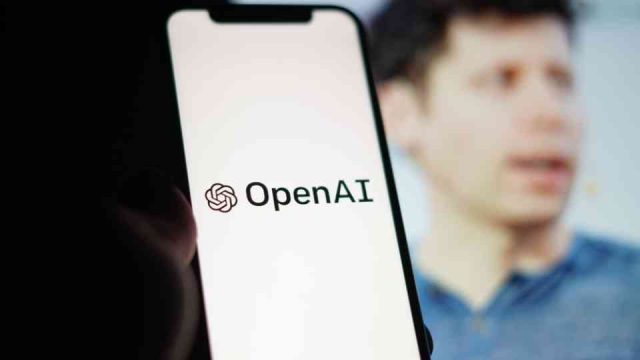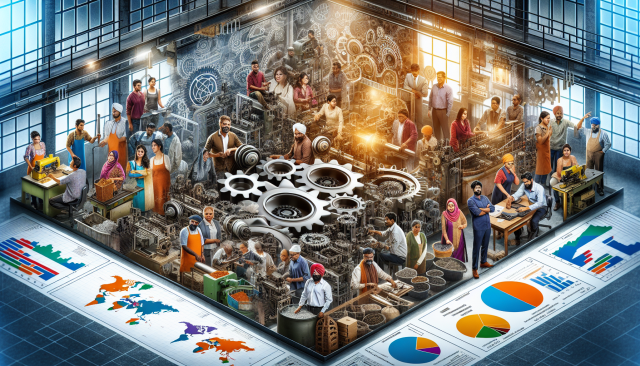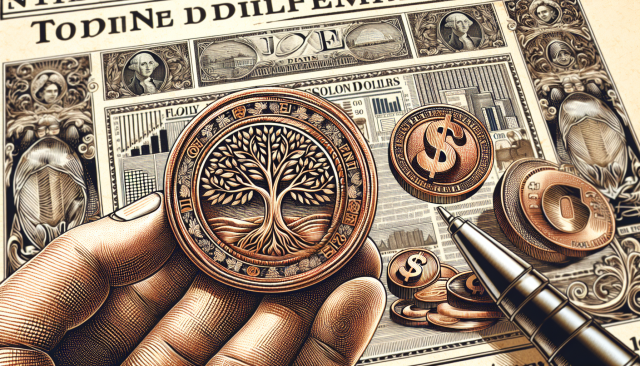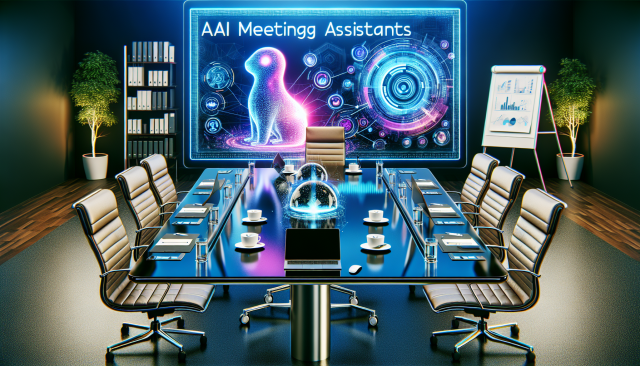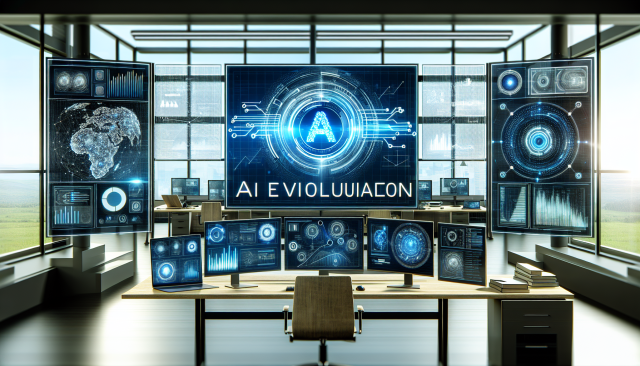As the tech world braces for the release of “The Optimist: Sam Altman, OpenAI, and the Race to Invent the Future”, many of us are revisiting the whirlwind days of late 2023 — a moment in Silicon Valley that felt less like a boardroom decision and more like a Shakespearean act of betrayal, loyalty, and resurrection. But beneath the headlines and hashtags, something deeper was unfolding: a masterclass — or perhaps a cautionary tale — in corporate adaptability. With the dust (somewhat) settled and the narrative soon to be canonized in print, we decided to re-examine this saga not through hype or hindsight, but through the Human Adaptability and Potential Index (HAPI) lens. What emerged was a tale in three acts — a journey through conflict, consequence, and possibility. Each act peels back a layer of the OpenAI drama, revealing the invisible scaffolding of modern leadership and the quiet signals of what it takes to thrive — or stumble — in the age of collective intelligence.
Act I: The Fall and Rise – Timeline Unpacked
On a crisp November morning in 2023, Silicon Valley found itself in familiar territory — in the middle of a soap opera. Except this time, the protagonist wasn’t a charismatic founder fighting regulators or launching a flamethrower brand. It was Sam Altman, the poster child of AI ambition, abruptly ejected from the very company he helped birth — OpenAI.
If you blinked, you might have missed a plot twist. So let’s rewind the reels and break it down.
November 16, 2023 – The Firing Squad
It began with a text. Not from a regulator, not from a lawyer, but from OpenAI’s Chief Scientist, Ilya Sutskever. He messaged Altman and Greg Brockman, the company’s president and co-founder, about a quick meeting.
By lunchtime, Altman was out. Brockman was demoted. And Mira Murati, OpenAI’s Chief Technology Officer, was tapped (quietly and somewhat reluctantly) to take over as interim CEO. The board then published a minimalistic blog post saying Altman had not been “consistently candid.”
Translation: “We can’t explain this, but trust us — it’s bad.”
The ambiguity triggered confusion, speculation, and existential dread in AI circles. It was the equivalent of ejecting the pilot mid-flight and then announcing, “We’re experimenting with new leadership models.”
November 17 – The Exodus Begins
News of the firing spread like wildfire. Brockman, Altman’s closest ally, resigned. Within hours, three senior OpenAI researchers also walked out. It was clear this wasn’t a mere organizational shake-up — it was a foundational rift.
At an all-hands meeting, Sutskever defended the board’s actions, invoking OpenAI’s nonprofit mission: “to benefit humanity.” Ironically, humanity — represented by OpenAI’s 770 employees — wasn’t buying it.
Meanwhile, Microsoft, OpenAI’s key investor and partner, released a cryptic but composed statement, effectively saying, “We didn’t authorize this episode, but we’ll keep the lights on.”
November 18–19 – The Rebellion
By now, the narrative had flipped. The board wasn’t seen as stewards of AI ethics — they were painted as rogue academics staging a “coup.” Employees revolted. More than 500 signed a letter threatening to resign unless Altman returned. That number soon swelled past 650, including Sutskever himself, the very architect of the ousting.
It was the corporate equivalent of Julius Caesar’s assassin joining the march to avenge him.
Amid the chaos, rumors swirled: Altman was planning a new startup. Microsoft had offered him and Brockman a new AI research division. OpenAI’s planned $86 billion tender offer — which would have made many employees beachfront homeowners — was now in jeopardy.
November 20 – Microsoft Steps In
Altman and Brockman posted online: they were joining Microsoft. Satya Nadella, ever the calm empire-builder, welcomed them with open arms. Not just them — any OpenAI employee disillusioned by the board could tag along. The bait was clear, and it wasn’t subtle.
This wasn’t just a hiring offer. It was a move on the chessboard — Microsoft was signaling to the board: “Blink, and we’ll take everything but your name.”
November 21 – The Return of the CEO
Under mounting pressure — employees threatening mass resignation, Microsoft’s recruitment raid, investor fury — the board relented. OpenAI and Altman “reached an agreement in principle.” He would return as CEO. The board would be restructured.
The new “initial board” would include Bret Taylor (former Salesforce CEO), Larry Summers (former U.S. Treasury Secretary), and Adam D’Angelo (CEO of Quora, the only remaining original board member). Microsoft would now have a non-voting observer seat — just close enough to the action, just far enough to say, “We’re not meddling.”
Altman, ever the pragmatist, tweeted that joining Microsoft “was the best path for me and the team” — a diplomatic way of saying, “We made the board blink.”
January 5 – The Dust Settles, Sort of
Microsoft’s observer, Dee Templeton, begins attending board meetings. Altman is back. The board is reshaped. Sutskever and Murati eventually leave to pursue their own ventures. A few scars remain, but the company lives on — and so does its mission to make AGI safe, scalable, and (hopefully) drama-free.
What Just Happened?
Let’s call it what it was: a botched mutiny staged in the name of ethics, without a backup plan, against a CEO who had both the workforce and the war chest on his side.
The board underestimated three things:
- Altman’s strategic depth — He already had Microsoft on speed dial.
- The employee bond — When 90% of your workforce threatens to walk, it’s not a protest; it’s a referendum.
- Investor outrage — Billion-dollar checks come with expectations, and chaos isn’t one of them.
In short, the board brought a philosophical knife to a business gunfight — and lost.
A Masterclass in Chaotic Negotiation
The firing and return of Sam Altman wasn’t just a leadership crisis — it was a high-stakes, multi-front negotiation battle where each side miscalculated, repositioned, and ultimately showed their hand. If we peel back the headlines, what emerges is a case study in power dynamics, coalition-building, emotional leverage, and strategic timing.
Let’s analyze the unfolding events as a negotiation — not between two parties, but a fluid web of alliances and oppositions, with two primary camps:
Camp A: The Board (Guardians of the Mission)
- Core Players: Helen Toner, Tasha McCauley, Adam D’Angelo, Ilya Sutskever
- Position: Ethical guardians, worried about transparency, power consolidation, and safety
- Tactic: Execute a sudden leadership change to “correct course” before things spin out of control
Camp B: Altman + Allies (The Operators)
- Core Players: Sam Altman, Greg Brockman, Microsoft, majority of OpenAI employees
- Position: Builders and pragmatists, focused on momentum, growth, and staying ahead of the AI race
- Tactic: Leverage employee loyalty, investor panic, and Microsoft’s might to reverse the decision
🎭 The Opening Move: The Blitz Firing
From the board’s perspective, surprise was their only weapon. By catching Altman off guard, they hoped to assert authority and reframe the company’s trajectory before being derailed by internal politics or press blowback.
Pros (Board’s View):
- Caught Altman without time to rally allies
- Reasserted their authority as the moral compass of OpenAI
- Sent a signal that the board isn’t just ceremonial
Cons:
- No transition plan, no communication strategy, no real stakeholder prep
- No immediate successor with legitimacy or buy-in
- Assumed too much control without enough coalitional power
This was a classic coercive tactic — control the process, force a reset, and explain later.
Flawed assumption: That Altman was isolated, and employees/investors would comply or remain neutral. Spoiler: they didn’t.
🤝 The Countermove: Altman’s Strategic Judo
Within hours, Altman wasn’t just fired — he was reframed as the protagonist in a moral rebellion. Microsoft (a $13B investor) offered him a new playground. Employees revolted. Altman’s team spun the narrative: this wasn’t a governance move — it was a coup.
Negotiation Tactics Employed:
- Coalition Building: 700+ employees signing a resignation letter? That’s not a petition; that’s a hostage situation with polite stationery.
- Leverage Creation: The Microsoft fallback wasn’t just an exit ramp — it was a weapon. A “take me back or lose everything” move.
- Framing the Narrative: By keeping the board’s reasoning vague (“not candid”), Altman’s allies filled the vacuum with a counter-story — one of betrayal, overreach, and technocratic zealotry.
Altman’s Key Strength: Control of the narrative and stakeholders. He turned the board’s opaque action into a rallying cry, winning the PR and HR wars simultaneously.
🧠 Negotiation Dynamics Breakdown
ElementThe BoardAltman & AlliesPower BaseStructural (nonprofit charter)Relational (employees), Financial (Microsoft), Narrative (media)Opening PositionRemove Altman for mission integrityReinstate Altman to restore orderBATNA (Best Alternative To Negotiated Agreement)Find new CEO, possibly via mergerMove to Microsoft with entire teamTacticsSurprise, secrecy, moral authorityPublic pressure, emotional loyalty, corporate leverageLeverageNonprofit governance control90% employee defection threat, funding collapse risk
⚖️ Who Negotiated Better?
The Board:
- Misstep #1: No clear successor with legitimacy or operational buy-in.
- Misstep #2: Failed to prepare external stakeholders (especially Microsoft).
- Misstep #3: Underestimated Altman’s influence and employee loyalty.
- Negotiation Score: 3/10
Altman & Co.:
- Masterstroke #1: Immediate alignment with Microsoft — a soft landing with big teeth.
- Masterstroke #2: Employee mobilization turned into overwhelming leverage.
- Masterstroke #3: Maintained calm public demeanor while others scrambled.
- Negotiation Score: 9/10
🧩 Meta-Lesson: The Negotiation Within the Negotiation
One of the most underappreciated layers here is that negotiations weren’t just about Sam Altman — they were about how governance models adapt to high-velocity industries.
The OpenAI board was clinging to an academic model of cautious, consensus-driven oversight. Altman was operating in real-time, where success is measured in shipped models and absorbed GPU cycles, not minutes from ethics committees.
In that sense, this wasn’t just a leadership fight — it was a philosophical mismatch.
📜 Final Notes on Act I
This episode will be studied not only in AI ethics and corporate governance courses, but also in negotiation strategy classes.
- Altman demonstrated how to win by making yourself indispensable — emotionally, financially, and strategically.
- The Board revealed the perils of righteous action without a strategic game plan or adaptive tactics.
- Microsoft? Satya Nadella played the role of a chess grandmaster watching two amateur knights fight — ready to claim either kingdom when the dust settled.
Act II: The HAPI Lens – Behavioral Breakdown
A great unraveling, like the one we saw at OpenAI, isn’t just about power, process, or PR. It’s about people. It’s about how humans — even the smartest in the room — respond to stress, ambiguity, and each other.
The Human Adaptability and Potential Index (HAPI) is a way of seeing leadership through five core dimensions: Cognitive, Emotional, Behavioral, Social Adaptability, and Growth Potential. Think of it as the ecosystem scan — not just how someone performs, but how they transform.
Let’s walk through the key actors in this saga and examine how they each fared in the face of chaos.
🧠 Sam Altman – The Phoenix Operator
Sam didn’t just respond to the firing; he reframed it. That’s cognitive adaptability in action. Instead of reacting with panic or defensiveness, he quietly aligned a Plan B with Microsoft while allowing the internal storm to build around him. This wasn’t just a move of strategy — it was a masterclass in reflective intelligence. He understood the long game and let his silence do the talking until the board was ready to listen again.
- Cognitive Adaptability: 10/10 Altman anticipated scenarios, activated contingency plans, and positioned himself for a return within days. Improvement? Practicing more transparency could reduce the need for such heroics in the first place.
- Emotional Adaptability: 9/10 He maintained composure under fire, never retaliating publicly. Improvement? Share more of his internal reflections post-crisis to strengthen psychological safety.
- Behavioral Adaptability: 10/10 Shifted from fired CEO to potential Microsoft exec to returning leader — all without contradicting his values. Improvement? Use his behavioral fluidity to model and institutionalize adaptability across the org.
- Social Adaptability: 10/10 Galvanized employee loyalty, preserved investor confidence, and retained credibility. Improvement? Consider long-term social capital structures — mentorship circles, reverse influence mechanisms.
- Growth Potential: 10/10 This wasn’t a recovery — it was a transformation. Improvement? Codify the lessons into OpenAI’s DNA so others can grow as he did.
HAPI Verdict: Worker1 exemplar. Sam Altman used adaptability not as defense, but as offense — converting crisis into leverage, and disruption into loyalty. The very essence of high potential.
🧪 The Board – Guardians Turned Gambiters
The board acted with urgency, and arguably integrity. But they didn’t act with adaptability. Cognitively, they became locked in a narrow interpretation of “protection.” They saw threats to mission — real ones, possibly — and decided the only remedy was immediate removal. But they didn’t explore nuanced paths. They didn’t simulate stakeholder responses. They didn’t ask: “What’s the chain reaction?”
- Cognitive Adaptability: 4/10 They acted decisively, but without scenario-mapping or stakeholder engagement. Improvement? Use red-teaming and foresight exercises before existential decisions.
- Emotional Adaptability: 3/10 The board transmitted anxiety rather than metabolizing it. Their actions sparked panic. Improvement? Train in executive emotional intelligence and structured empathy dialogues.
- Behavioral Adaptability: 2/10 Their plan was binary: fire or not. No pilot programs, no transition scenarios. Improvement? Develop phased response strategies and internal escalation ladders.
- Social Adaptability: 1/10 Lost trust across the company and partners. Improvement? Build social capital maps and feedback loops with all tiers of the organization.
- Growth Potential: 2/10 This was a moment for reinvention; instead, they retreated. Improvement? Shift governance from static oversight to adaptive co-creation.
HAPI Verdict: Mission-driven but maladaptive. Their caution was valid, but their actions were incompatible with the environment they governed. Think monks trying to pilot a fighter jet.
🧬 Ilya Sutskever – The Turncoat Oracle
Ilya’s arc is almost Shakespearean. The co-founder, the scientist, the conscience of OpenAI — turning on Altman only to later turn again on his own decision.
- Cognitive Adaptability: 6/10 Perceived risk clearly, but didn’t simulate organizational response. Improvement? Combine ethical concerns with stakeholder scenario modeling.
- Emotional Adaptability: 4/10 Public reversal indicated emotional conflict more than maturity. Improvement? Develop emotional regulation practices and conflict facilitation training.
- Behavioral Adaptability: 5/10 Shifted positions twice in 72 hours — reactive, not adaptive. Improvement? Create decision-making protocols to reduce emotional oscillation.
- Social Adaptability: 4/10 Influence eroded quickly after reversal. Improvement? Rebuild through transparent storytelling and bridge-building.
- Growth Potential: 6/10 Has potential in a focused environment but needs separation from this context. Improvement? Seek roles where intellectual integrity and operational complexity are better aligned.
HAPI Verdict: High intelligence, unstable adaptation. A tragic figure in this drama — emotionally torn, socially isolated, and intellectually caught between values and velocity.
🧠 Mira Murati – The Accidental Rebel
Mira began this story as a technical leader. By the end, she was a moral fulcrum. Initially installed by the board as interim CEO, she quickly assessed the pulse of the company — and chose the side of trust.
- Cognitive Adaptability: 8/10 Assessed evolving dynamics quickly, changed course with strategic awareness. Improvement? Cultivate a stronger proactive stance, not just responsive strategy.
- Emotional Adaptability: 9/10 Balanced grace under pressure and clarity in action. Improvement? Use her calm presence to build organizational emotional protocols.
- Behavioral Adaptability: 8/10 Made a bold shift while preserving her core leadership identity. Improvement? Institutionalize adaptive behaviors for others to model.
- Social Adaptability: 7/10 Maintained credibility with both camps but burned some ambiguity capital. Improvement? Clarify personal stance and mission going forward.
- Growth Potential: 9/10 Strong potential to grow into a systems leader. Improvement? Invest in cross-domain mentorship and broader system-level design exposure.
HAPI Verdict: Emerging Worker1. Mira showed the capacity to grow through chaos. Not yet fully actualized, but clearly high-potential with balanced adaptability across domains.
🧱 Microsoft (Satya Nadella) – The Strategic Sculptor
If this drama were a war game, Microsoft didn’t just survive it — they expanded their territory.
- Cognitive Adaptability: 10/10 Saw the board’s blunder as an opportunity — and made every move count. Improvement? Share more playbooks to help other partners build cognitive depth.
- Emotional Adaptability: 10/10 Stayed calm, consistent, and encouraging. Improvement? Offer emotional modeling frameworks for tech leadership.
- Behavioral Adaptability: 10/10 Shifted from supporter to savior without disrupting their image. Improvement? Use that agility to set adaptive governance examples industry-wide.
- Social Adaptability: 10/10 Grew influence without flexing control. Improvement? Mentor ecosystem players on how to wield quiet power.
- Growth Potential: 10/10 Expanded strategic control and cultural capital in one sweep. Improvement? Elevate the conversation: how should tech power behave?
HAPI Verdict: The Grandmaster Worker1. Microsoft didn’t just play the board — they rewrote the rules without flipping the table. A masterclass in soft power and adaptive leadership.
🧩 OpenAI Employees – The Collective Spine
And then there’s the unsung protagonist of this saga: the employees. Nearly 700 of them signed a letter saying, essentially, “No Altman, no us.” That’s more than loyalty — that’s identity alignment.
- Cognitive Adaptability: 9/10 Understood the implications fast and moved as a unit. Improvement? Formalize collective foresight mechanisms to act earlier.
- Emotional Adaptability: 10/10 Angry but composed — principled protest without chaos. Improvement? Use this event to craft values-aligned response frameworks.
- Behavioral Adaptability: 10/10 Signed and acted swiftly, without damaging internal culture. Improvement? Maintain behavior-playbooks for future inflection points.
- Social Adaptability: 10/10 Achieved alignment across disciplines, ranks, and motivations. Improvement? Strengthen informal peer-to-peer influence networks.
- Growth Potential: 10/10 This is a Worker1 workforce — smart, adaptive, values-driven. Improvement? Design internal scaffolding to accelerate community-driven innovation.
HAPI Verdict: Worker1 in swarm form. The employees are not just talent; they are the cultural foundation of any future OpenAI can build.
🧠 Overall HAPI Takeaway
This drama wasn’t just a test of strategy — it was a stress test in adaptability. The players who thrived weren’t necessarily the smartest, or even the most ethical — they were the ones who could learn in motion, hold emotional poise, shift behaviors intelligently, connect across factions, and evolve toward a bigger future.
Or, as we say in the HAPI universe: The ones with the greatest potential are not those who hold power, but those who adapt when power shifts.
Act III: A HAPI-Compliant Path – A Blueprint for Adaptive Strategy
In a world moving at the speed of compute, power alone won’t keep organizations ahead — adaptability will. The OpenAI saga was not a failure of intelligence, ethics, or even mission — it was a failure of adaptability across the five key HAPI dimensions.
Let’s now explore, in detail, how a more HAPI-aligned strategy could have transformed this conflict into a collaborative evolution.
1. 🧠 Cognitive Adaptability – From Reaction to Reflective Intelligence
What failed: The board made a dramatic, irreversible move based on ethical concerns and perceived deception. But it skipped cognitive calibration — engaging all perspectives, running scenario simulations, stress-testing consequences.
What should have happened: A cognitively adaptive board would have paused to run divergent-convergent thinking loops:
- Divergent: Map out all concerns — governance, equity conflicts, AI safety issues, startup fund ownership, stakeholder trust.
- Convergent: Build consensus on possible courses of action: internal audit, CEO review process, executive coaching, transparent joint sessions with Microsoft.
Best practice tools:
- Red Teaming: Have a group stress-test board actions before implementation.
- Pre-mortem Analysis: “Assume this decision fails — what will be the reasons?”
🧬 Cognitive adaptability means seeing the whole board, not just your corner. In ecosystems, evolution doesn’t punish mistakes — it punishes stagnation.
2. ❤️ Emotional Adaptability – The Human Element of High Stakes
What failed: The board’s abrupt, opaque action ignored the emotional signal system of its workforce and partners. Their silence created a vacuum — and in high-trust environments, vacuums get filled with suspicion.
What should have happened: A HAPI-compliant approach would center emotional truth-telling:
- Schedule safe-space conversations with Altman to surface conflicts.
- Engage an executive coach mediator for emotionally charged discussions.
- Design a transparency calendar — planned moments to release info internally and externally with empathy.
Best practice tools:
- Leadership Circles: Confidential cross-role reflection sessions.
- Emotional Check-Ins: Short weekly pulse checks for board-CEO relations.
🐘 Elephants resolve hierarchy tensions with trunk touches before escalation. Emotional intelligence isn’t optional in complex systems — it’s infrastructure.
3. 🔄 Behavioral Adaptability – Managing the Pivot, Not Just the Principle
What failed: The board acted as if removing Altman was a simple structural fix — as if the organization wouldn’t react like an organism. Altman, to his credit, demonstrated behavioral judo — flipping the script without public venom.
What should have happened: Behavioral adaptability requires transparent signaling of intent and testing shifts in low-stakes environments first:
- Set up a shadow board or advisory panel to experiment with alternative power models.
- Conduct a governance simulation — “What if Altman took a sabbatical? Who leads? What breaks?”
- Align feedback loops between operations and governance to avoid sudden shocks.
Best practice tools:
- Adaptive Role Charters: Living documents describing evolving responsibilities and accountabilities.
- Pre-Action Debriefs: Before a big move, simulate the outcome with the people who’ll live it.
🕊️ Geese shift leaders mid-flight without breaking formation — a metaphor for shared responsibility and fluid hierarchy.
4. 🌐 Social Adaptability – Power in Relationship, Not Role
What failed: The board acted in a silo, believing its structure gave it license. But in a post-founder world, power is relational. Social capital is king — and Altman had it in abundance. They lit a match in a room filled with dry relational tinder.
What should have happened: Social adaptability would’ve demanded a coalitional strategy:
- Map trust networks within the org: Who influences whom? Who’s a stabilizer?
- Engage Microsoft before action — not just as a funder, but as a co-governor.
- Co-design a distributed accountability model where safety advocates and product leaders shape decisions together.
Best practice tools:
- Trust Network Mapping: Visualize internal influence webs.
- Consensus-Building Protocols: Design decision flows that respect multiple voices.
🐜 Ants don’t have CEOs — they have pheromone trails. Influence spreads through signals, not authority.
5. 🌱 Growth Potential – Crisis as Curriculum
What failed: This was a moment to evolve OpenAI’s operating system. Instead, both sides acted like they were defending legacies, not designing futures. When the dust settled, no new learning systems were created — just a reshuffled board.
What should have happened: Growth potential flourishes in systems that treat disruption as a feedback loop:
- Run a post-action learning lab: What beliefs broke down? What practices helped? What do we now know that we didn’t before?
- Use this event to build a resilience protocol: What happens next time someone violates a trust boundary or misaligns with governance?
Best practice tools:
- Adaptive Governance Playbooks: Contain role transitions, communication flows, and trust-repair pathways.
- HAPI Index Tracker: Quantitative and qualitative measures of team adaptability and ecosystem resilience.
🌾 Like bamboo in a storm, organizations that bend without breaking are the ones that grow strongest in the next season.
🧠 The HAPI Summary: How to Transform Conflict Into Capability
DimensionWhat FailedWhat Should’ve HappenedCognitiveBinary decision-makingMulti-scenario foresight and stakeholder inclusionEmotionalSuppressed fear, opaque motiveHonest conversation and guided emotional unpackingBehavioralAbrupt action, rigid playbookTransparent signaling and behavioral prototypingSocialSiloed authority, no soft-power mappingCoalition-building with trusted influencersGrowth PotentialPost-crisis stagnationCodified learning systems and crisis recovery design
Final Word: From Drama to Design
We don’t need fewer conflicts. We need better-designed conflicts — ones that evolve leadership, upgrade systems, and bring hidden truths into light.
What happened at OpenAI was a missed opportunity. But what happens next — how we interpret, learn from, and reimagine this moment — could be a blueprint for the next generation of mission-driven, adaptable organizations.
🔁 Conflict is not the opposite of alignment. It’s the compost from which collective intelligence grows.
Let’s design systems — and leaders — who are ready to thrive in the mess.
In the end, the OpenAI saga wasn’t just a test of governance or a clash of egos — it was a rare mirror held up to the soul of modern leadership. Through the HAPI lens, we saw that adaptability isn’t a trait reserved for the lucky or the gifted — it’s a discipline, a strategy, and above all, a collective responsibility. The board had the mission. Altman had the momentum. Microsoft had the means. But the real muscle came from the people — the employees who chose principle over personal gain, and the ecosystem that demanded evolution over ego. If there’s one lesson to carry forward, it’s this: strong leaders may shape moments, but strong systems shape futures. And as AI becomes the operating system of our civilization, we can no longer afford leadership models that crash under pressure. The next frontier won’t be won by the smartest or the loudest — but by those most willing to adapt, connect, and grow. That’s the real race to invent the future.

















